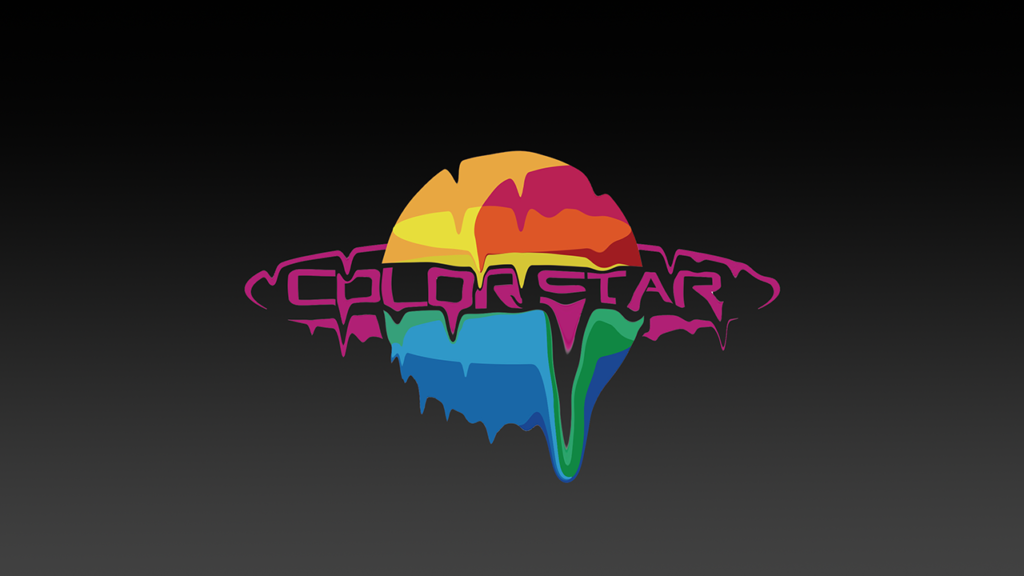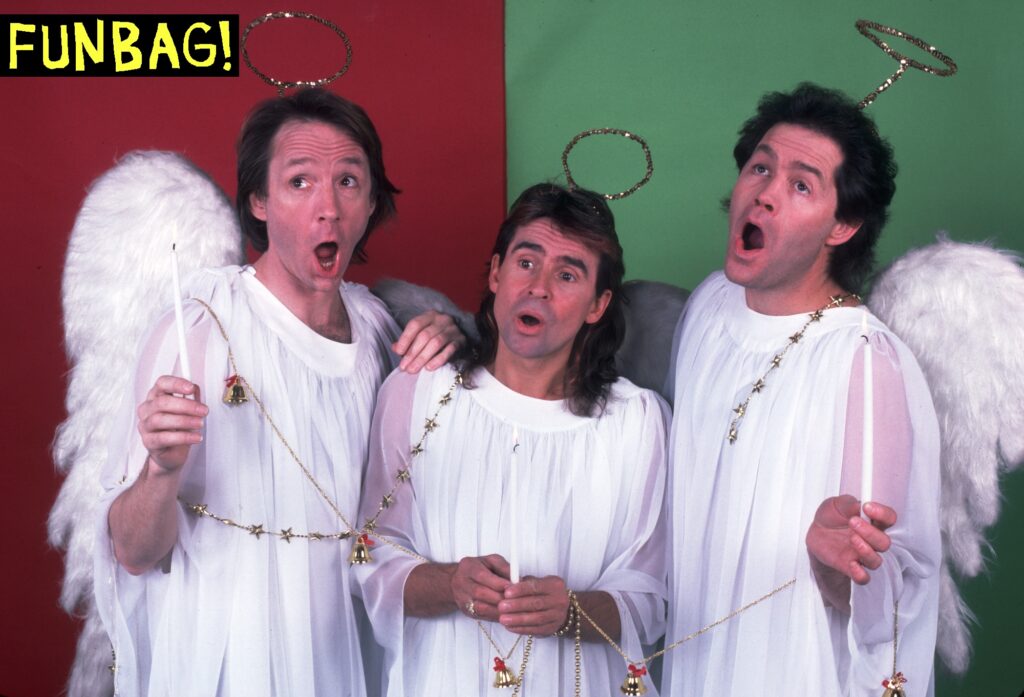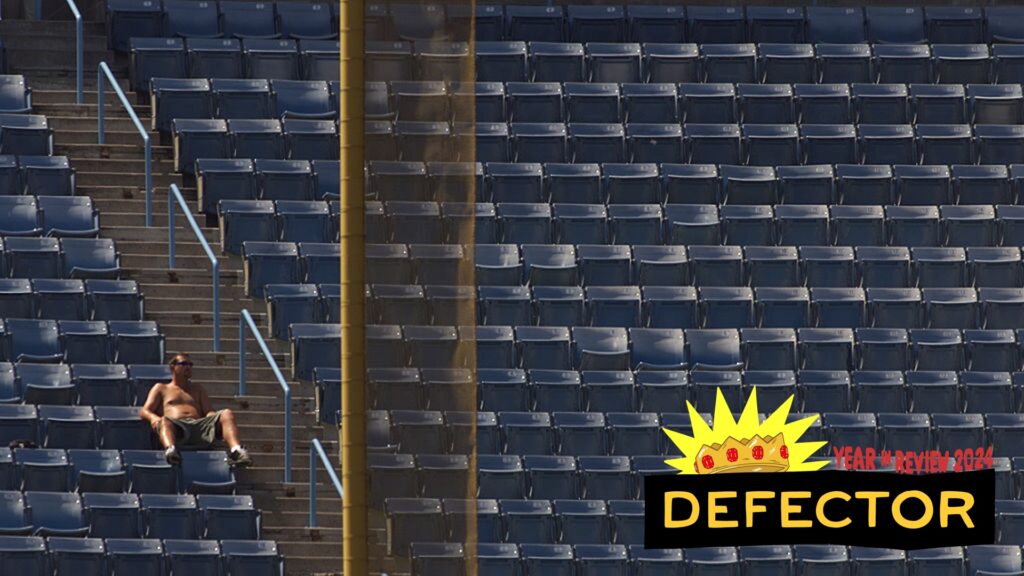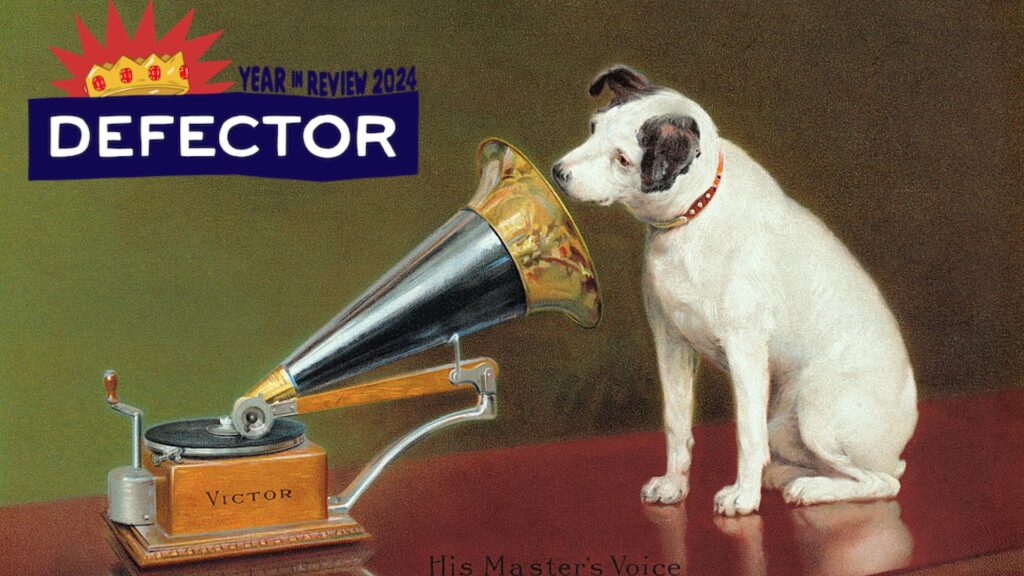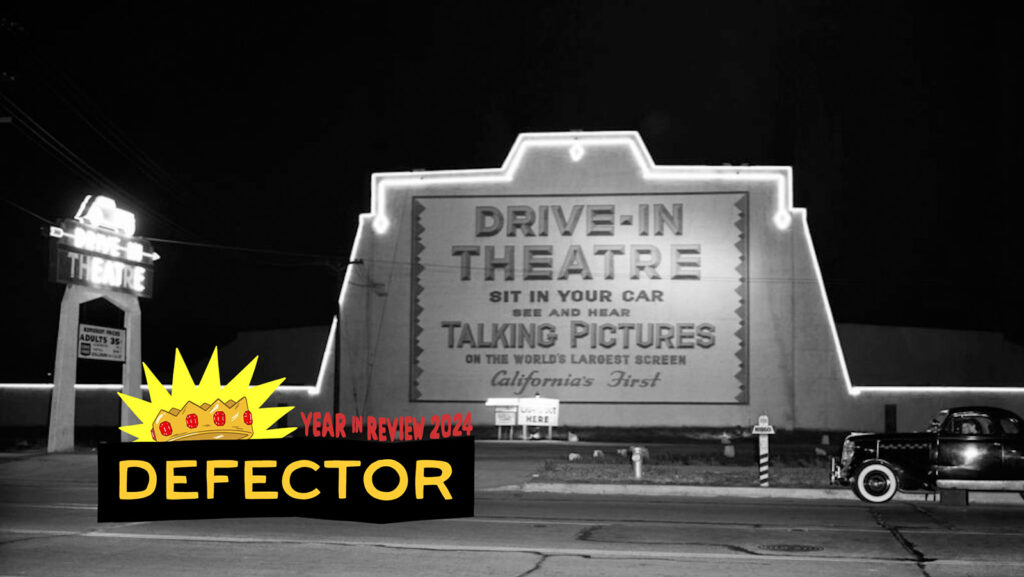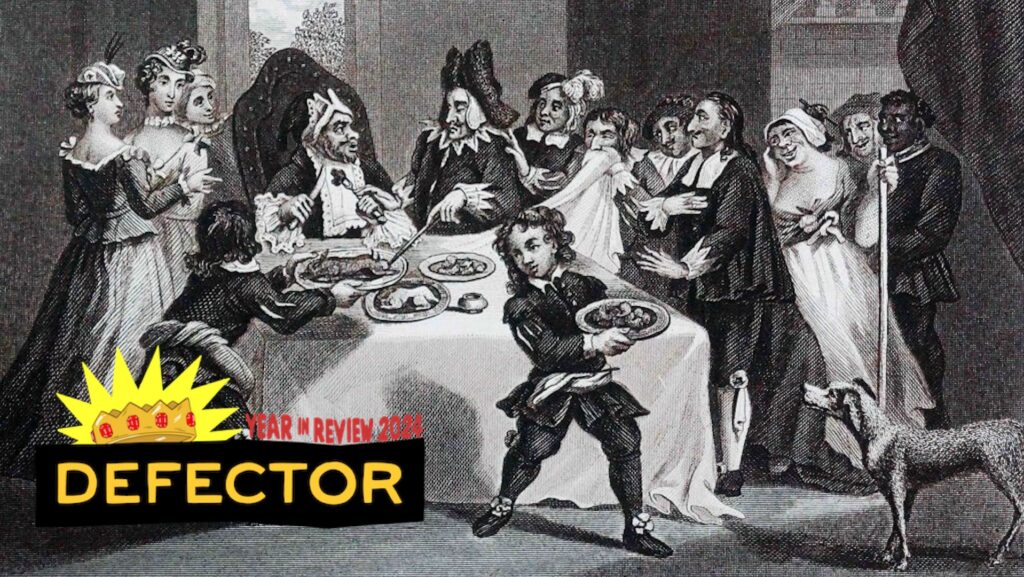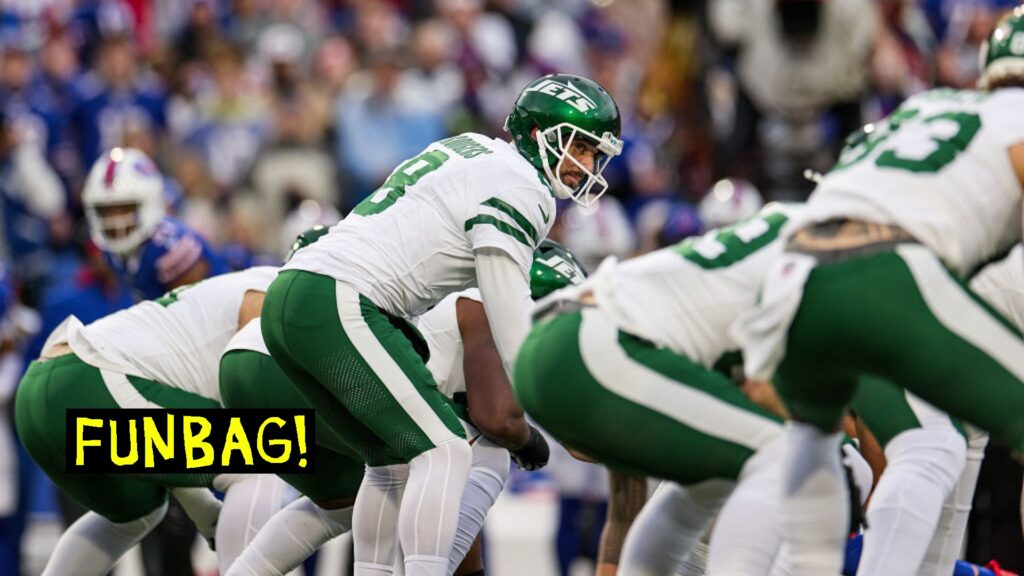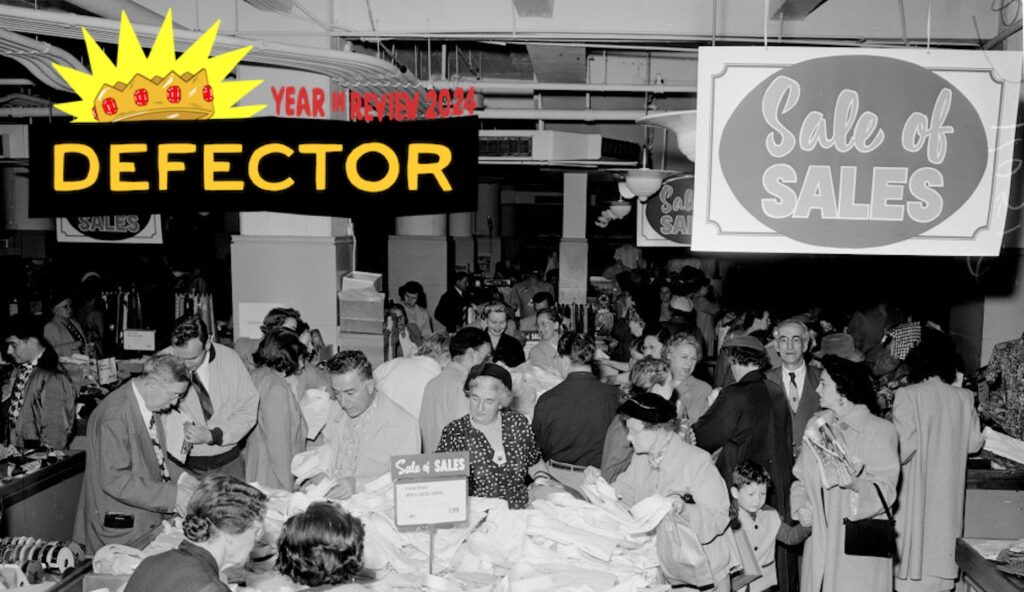When I was a kid, like many kids in the 80s, I had a View-Master. I actually had a few View-Masters. You may have seen them before: they were little red things that looked like a camera, with what looked like a visor in the middle and a small orange lever on the side. They were a kind of mini photo projector. When you bought them, you also received a bunch of small round cards with slides on the edges. The card fit into a slot and each time I pushed the lever, a new slide appeared with a new image. It made a satisfying clicking sound. I remember having a eastern time one, but they also had cards for TV shows and toys. Mine were all movies. It wasn’t like watching the movie, but it was a bit 3D and it was better than reading a short interview in some teen magazine, which is all you could really get in those days if you were a kid looking for more involvement with your favorite movies (VHS tapes rarely had special features). The images flashed one after another, as you flipped through them, telling the story in different parts. It was full of holes, but it hit important notes, like Gertie kissing ET on that flower. Your memory of the movie itself filled in the blanks.
View-Masters first appeared in 1939, behind high-quality color photographs. But they weren’t that different from Eadweard Muybridge’s projected albums. The horse in motion 1878. Considered the first fragment of protocinema, the photographer’s glass discs, dotted with images of a horse in various stages of gallop, were passed through an early version of the film projector that he called, for obvious reasons, a zoopraxiscope. All this arose less from artistic aspiration than from scientific research: a man just wanted to know what position a horse’s legs really took when it was moving very fast, which was difficult to see with the naked eye. Muybridge understood the motion, but also the parts that composed it; Movement through time was important, but individual images were also important.
I mention this because some of my recent trips to the movies felt more like a date with the View-Master. I’ll get to the examples in a second, but it’s enough of a trend that I can explain it in generic terms first. These are the movies that often have a plot so weak it’s hard to decipher, and characters so vague it’s hard to latch onto them, so instead what you often get are talented filmmakers, or at least, Filmmakers who are putting a lot of thought into their individual shots, producing beautiful images that play like a reel in front of you, one after the other, but with no real build, no big push. If you’re lucky, the atmosphere can make you float, but usually in the end you’re left thinking: nice images.
I started to think about all this seriously as I watched NosferatuRobert Eggers’ remake of FW Murnau’s 1922 silent vampire film. I think because some of the images are SO beautiful: my favorite is an empty, ghostly carriage, driven by nothing and no one, stopping at the feet of the lawyer (Nicholas Hoult as Thomas Hutter) heading to the vampire’s house. lair to bring him some contracts (the banality of this always makes me laugh), his door opens by itself. All I could think of was Emily Dickinson’s poem: “Because I could not stop for Death –/He kindly stopped for me –/The carriage carried only ourselves –/And immortality.” Another image, one of the candlelit houses in a village Thomas encounters during the same trip, looks like a live version of a glowing Rembrandt. Eggers’ previous work in art departments makes him a master at producing these types of exquisite, semi-dynamic paintings.
Nosferatu unfolds around an erotic psychic connection between Thomas’s wife, Ellen (Lily Rose-Depp), and the vampire Count Orlok (Bill Skarsgård, unrecognizable, whose monstrous form is only fully revealed at the end). The original story is embedded in Victorian shame around female sexuality. In the film, that amounts to close-up after close-up of the beautiful expanse of a Depp face in various stages of desire and anguish, of Dracula in the shadows, of Hoult acting terrified, of the Victorian era, none of which seemed be particularly intertwined. About halfway through, I turned to my friend and said, “What’s the point of this?” (As Nicholas Russell wrote, you have to wait a long time for nothing.)
There was a notable boost in film when Willem Dafoe appeared on screen as Professor Albin Eberhart Von Franz (fittingly, the only one who understands what’s going on between Ellen and Orlok). And I don’t think it was just because it was Dafoe. He was playful in a way the other actors didn’t seem to be, bringing the same vitality to this Eggers film as he did to the 2019 one. The lighthouse. Eggers’ work, despite being incredibly beautiful to look at, seems to require the dynamism of its actors to get ahead; their stories aren’t particularly lively outside of that. They are little more than meticulous staging. That Nosferatu It’s a horror movie that fits.
The horror genre seems particularly susceptible to privileging imagery over momentum, which isn’t surprising considering how much it relies on atmosphere. Two horror movies that were released in summer, long legs and Cuckooas Nosferatu, It left me equally baffled (and they had no classic source material to fall back on). I saw Cuckoo while on vacation, so I should be able to sum it up easily, but frankly, I mostly remember what I might have seen in the trailer: Hunter Schafer looks hazy and ethereal at some retro resort in the Alps while being chased by a creepy… staring woman . The film never coheres into anything solid and never explains anything particularly well. The point is that Schafer is being persecuted.
long legs It was worse. Watching it made me feel like I was babysitting a child who kept trying to scare me by putting a blanket over its head and standing in the corner of the room, over and over again. I literally remember nothing else about that movie except Nicolas Cage’s paper mache prosthetics (he’s Longlegs). Apparently the problem isn’t just my terrible memory. “As the film progresses, it’s hard not to feel caught in an Instagram horror fancam loop,” wrote Justine Peres Smith at Cult MTL, who noted long legs references to classic horrors like Psychopath and The silence of the lambs. “You go around and around in circles, elated at first by memories of a movie you loved, but slowly brought down by the central emptiness of the presentation.”
Smith’s invocation of Instagram was spot on. Follow enough movie accounts on social media (if you don’t know what that is, imagine a Twitter account constantly posting four frames from an Eggers movie with the caption “I was cooking!”) and you’ll start to suspect that Something Little Has Changed in how movies are made and how they are seen. If a fragmented population is seeing so much fragmentation, doesn’t it make sense that the arc of history becomes irrelevant?
I don’t need a traditional three-act structure (setup, confrontation, resolution) and I don’t need a hero’s journey. A lot of great movies don’t have those things. But I do need some kind of point, a reason for being, no matter how minor. I need something to guide the movie, anything. Nosferatu, long legs, and Cuckoo It doesn’t seem like they are being guided in any particular way. They seem to lack any sense of cognitive completion on the part of the artist himself, which translates to the screen. Instead, they read like sketches, like elevator pitches, like lofty concepts that excited an executive without much concern for follow-up.-Nosferatu in colors! Hunter Schafer in the Alps! Nicolas Cage doing anything! You could paste shots from these movies into a View-Master and I imagine that would be an improvement.
Perhaps this is the new form of cinema: a pastiche of images that never materialize. Anyway, the idea of what exactly cinema is has always been changing. Experimental filmmakers and various film movements have always questioned conventions such as character and story. Some of his films are abstract to the point of being unreadable. Even so, the best are not montages without an objective behind them: their intention is coherent, they go somewhere. The pier by Chris Marker, for example, is an experimental black-and-white short composed almost entirely of time-travel stills in which a man witnesses his own death. It shows the limitations of both film and photography, a kind of confrontation that goes back to Muybridge and View-Master. As Catherine Lupton writes in her Criterion essay:
It is certainly not the only film composed from still images, but its triumph is taking advantage of them, using the classic grammar of the narrative fiction film, to achieve a sober and simplified plot (barely twenty-seven minutes in length): a science fiction story post-apocalyptic about tragic heroism and lost love, which revolves around the fatal attraction of images and the price paid for that desire. The use of still photographs distills the essence of cinema’s appeal and its impossibility: the desire to fix what is always in motion, the desire to possess the presence of what is always absent, the willing suspension of disbelief that will create the illusion of reality from a projected stream of immobile representations.
The last scene of The pier It’s a montage of frames showing the protagonist running towards his own destiny, and it has more dynamism than all the horror films I mentioned combined. It demonstrates that the driving force of the film is the story itself, that even though the images remain still, that It must move forward, just as time does. As the narrator says before the protagonist is killed: “He knew there was no way out of time.”

 Workout
Workout
 Meditation
Meditation




 Contact Us
Contact Us


